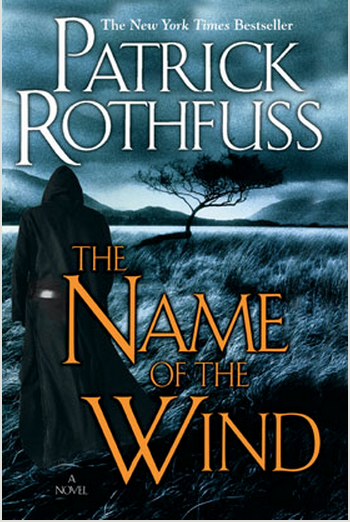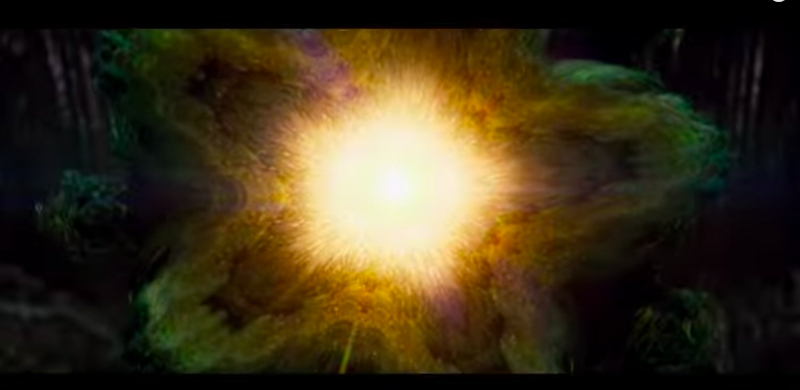aNewDomain — “The Kingkiller Chronicle,” by Patrick Rothfuss, is a fantasy book trilogy of epic proportions. We’re talking on the scale of “The Lord of the Rings” or “A Song of Fire and Ice” — a saga that will influence the literary world. There’s adventure, laughter, sorrow and wit, all narrated skillfully by a protagonist who spins his own tale — the story of how one moment can make a legend of a young man.
It’s no surprise, then, that the trilogy is being adapted for TV. Below I’ll give a brief summation of the legendary trilogy, future prospects and what the TV show may look like.
The Trilogy (small spoilers)
My name is Kvothe. I have stolen princesses back from sleeping barrow kings. I burned down the town of Trebon. I have spent the night with Felurian and left with both my sanity and my life. I was expelled from the University at a younger age than most people are allowed in. I tread paths by moonlight that others fear to speak of during day. I have talked to Gods, loved women and written songs that make the minstrels weep. You may have heard of me.” — Kvothe, in “The Name of the Wind”
 “The Name of the Wind” is the first novel in “The Kingkiller Chronicle” trilogy and, like each book, it takes place over a single day. Kote, the protagonist in the series, narrates the tale of Kvothe, a young street smart man who is set on hunting down an elusive group that is somehow involved in his family’s death. Over time Kvothe becomes a legend in his own world.
“The Name of the Wind” is the first novel in “The Kingkiller Chronicle” trilogy and, like each book, it takes place over a single day. Kote, the protagonist in the series, narrates the tale of Kvothe, a young street smart man who is set on hunting down an elusive group that is somehow involved in his family’s death. Over time Kvothe becomes a legend in his own world.
The riveting tale begins in Newarre, a rural town where the innkeeper, Kote, and Bast, his assistant, are introduced. Fairly early on it becomes clear that the legendary Kvothe is Kote, and you are therefore reading his account of past events.
Kote is an incredible magician, a brilliant musician and, of course, an unparalleled swordfighter. In the beginning of the book Kote journeys out of town and runs into a scribe called Chronicler. Kote saves Chronicler from a spider-esque creature and brings the scribe back to his inn. Chronicler asks to record Kote’s tale, and Kote agrees, saying that it will take three days to do so. And “The Kingkiller Chronicle” is born.
The world was introduced to the trilogy with “The Name of the Wind” in 2007, and the second book, “The Wise Man’s Fear,” came out in March 2011. “The Door of Stones” (working title), the third and final in the trilogy, is set (at the time of this writing) for release sometime in 2015.
 Magic!
Magic!
Even though this was his first publication, Rothfuss is a masterful storyteller that creates stories within stories, building a rich world. The trilogy contains stunning landscapes, an academy that is similar (to me, anyway) of Hogwarts, a slew of cunning and brash characters, supernatural creatures and plenty of dark demons in the night. And then there’s the magic.
Magic, believe it or not, takes many shapes in Kote’s world. The first shape is called “sympathy,” which is linked to a unique force of will called “Alar.” Sympathy connects two objects in an immaterial fashion and, by doing so, controls both objects.
This sounds like an extrapolation of concepts in our own world, and Rothfuss pulls it off with ideas like thermodynamics and the laws of physics, which remain semi-realistic. For instance, lifting two objects with Alar requires a great deal of force because of the energy/heat expelled from the objects themselves. Yes, fascinating, and yes, strange.
“Naming” is the second form of magic, and it feels a bit more familiar. A person must intuitively know or discover the “true name” of an object and, in the novels, this process can’t be understood by the conscious mind. Holding power of a true name is possible only through great effort or a natural, instant fight-or-flight reaction. Names have power, after all.
Alchemy and runes are also a part of the world, and take the place of chemistry. This is a classic fantasy technique, and Rothfuss does it well.
One of my favorite aspects of the trilogy is the unique singular point of view. There are a seemingly endless amount of key characters in the books, all of which enhance the plot and are part of the series, but we never get inside their heads. Many other fantasy series switch from character to character, but Rothfuss puts the microscope on Kote and Kote alone. We then see each character through Kote’s eyes, and the result is a rich and opinionated world.
Made for TV
20th Century Fox has plans (though long-awaited) to bring “The Kingkiller Chronicle” to television. The executive producer will be Eric Heisserer (“Hours,” “The Thing”) along with Andrew Plotkin, Brad Weston, Robert Lawrence and Arnon Milchan.
I wonder how true the series will stay to the books. There’s always wonder and excitement, then worry and despair, when it comes to adaptations. Successful adaptions (from my own perspective) are possible, with a solid history in J.R.R. Tolkein’s “The Lord of the Rings,” or J.K Rowling’s “Harry Potter” books and most recently George R.R. Martin’s “A Song of Fire and Ice” in the wildly popular “Game of Thrones.” But they can always fall flat.
The formula for converting a successful book to TV/movie has never been mastered, but Rothfuss seems open. He named possible actors for his characters in 2008, with Neil Patrick Harris playing Bast, or Morena Baccarin as Fela.
Much like “Game of Thrones,” the first season of “The Kingkiller Chronicle” hopes to cover the first novel. “The Name of the Wind,” though, should probably be split into at least two seasons. There’s not much news on when the series will launch, but it will truly be a feat when the words come to the screen.
You’ll find “a silence in three parts” when you decide to pick up “The Kingkiller Chronicle,” and you really should if you haven’t already.
For aNewDomain, I’m Cassandra Chin.
Featured image: Emerald Lake by Steven Bratman via Flickr
All other images: Screenshots courtesy of Patrick Rothfuss













